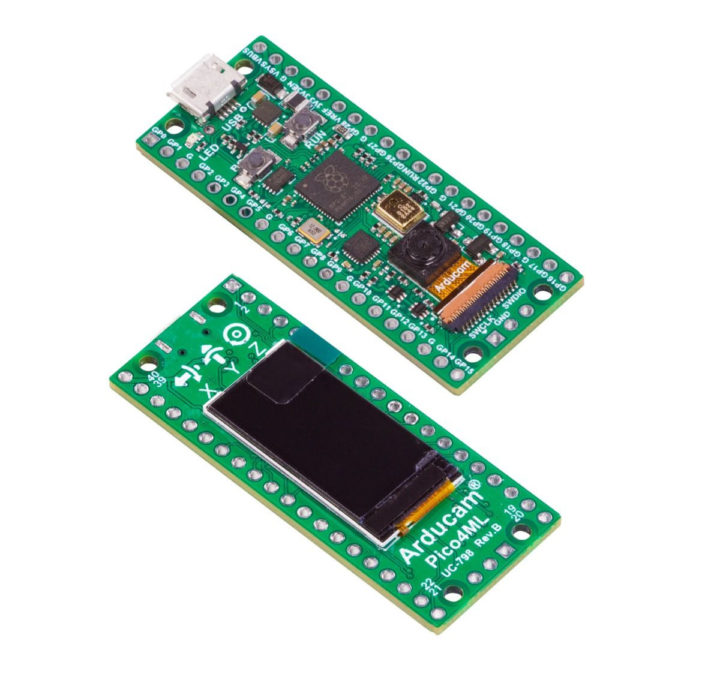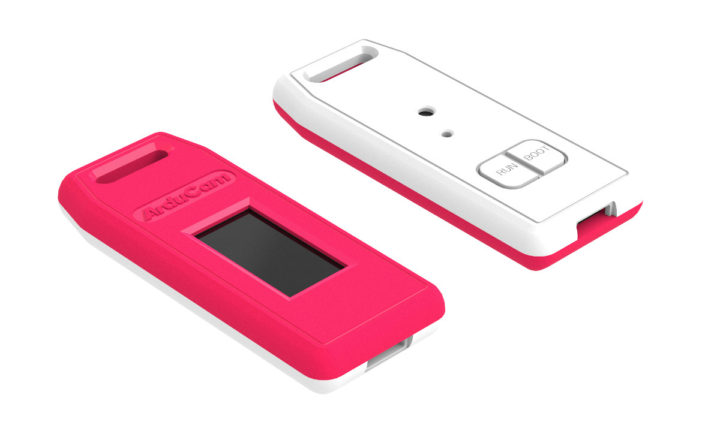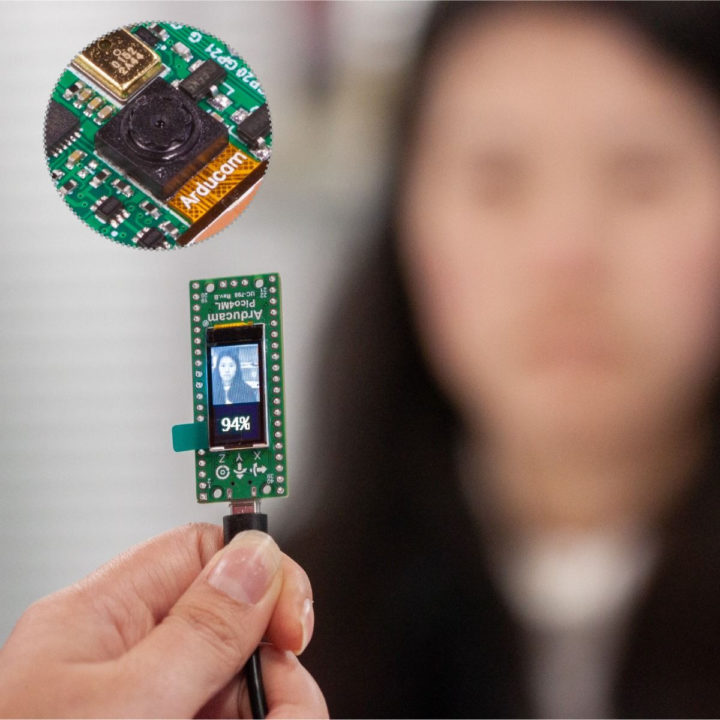A few months ago, ArduCAM demonstrated person detection on Raspberry Pi Pico with Arducam camera using TensorFlow Lite, and later we noted more work was being performed to bring machine learning to RP2040 platforms, notably with the development of Arducam Pico4ML board with a built-in camera and display.
At the time, i..e last month, all we had were some renders of the board, but now Arducam Pico4ML pre-orders have launched for $49.99 on UCTRONICS and Tindie stores. Shipping is scheduled to start at the end of the month, so let’s have a closer look.
 Arducam Pico4ML TinyML devkit specifications:
Arducam Pico4ML TinyML devkit specifications:
- Microcontroller – Raspberry Pi RP2040 dual-core Cortex-M0+ MCU with 264 KB of embedded SRAM
- Storage – 2MB SPI flash
- Display – 0.96-inch LCD SPI Display (ST7735) with 160 x 80 resolution
- Camera – HiMax HM01B0 QVGA camera (320×240 @ 60fps)
- Audio – Built-in microphone
- Sensor – IDK ICM-20948 9-axis IMU (gyroscope, accelerometer, compass)
- Expansion – 2x 20-pin headers that follows Raspberry Pi Pico pinout with 26x GPIOs, 3x 12-bit ADC, 2x UART, 2x I2C, 2x SPI, 16x PWM, 2x programmable high-speed I/O
- Misc – Reset and Bootsel buttons
- Power Supply – 5V via micro USB port
- Dimensions – 51 x 21 mm
So the board is basically a Raspberry Pi Pico with a display, a camera, a motion sensor, a microphone, and a Reset button. Arducam provides pre-trained TinyML models using Tensorflow Lite including Person Detection, Magic Wand, Wake-Word Detection, etc… You’ll find those and related documentation on Github and Hackaday.io.
Note that person detection needs around 860 ms (i.e. a little over 1 fps), so it’s not the ideal platform for this particular workload, as for example, the ~$25 Maixduino kit based on Kendryte K210 RISC-V AI processor could achieve face detection at around 15 to 18 fps when I tested it. But motion and audio detection can be done at a reasonable speed on the Ardacum board.
There’s also a rather nice-looking Raspberry Pi-styled enclosure (red and white), but it does not appear for sale right now. The STEP file has been released though, so it would be possible to 3D print it.


Jean-Luc started CNX Software in 2010 as a part-time endeavor, before quitting his job as a software engineering manager, and starting to write daily news, and reviews full time later in 2011.
Support CNX Software! Donate via cryptocurrencies, become a Patron on Patreon, or purchase goods on Amazon or Aliexpress







Je ne veux pas passer mes journees a me plaindre sur ce site, mais il me semble qu’il y a de plus en plus de posts sur le sujet du RPi Pico. Et ils sont presque tous identiques sauf quelques variations mineures. C’est dommage, j’ai bien apprecie ce site depuis plusieures annees, mais la j’en ai un peu marre du Pico. Je doutes etre le seul avec ces pensees.
News about RP2040 / Raspberry Pi Pico do not come out of thin air, it’s just because more and more companies are using the microcontroller. The RP2040 board discussed above is the first one I’ve ever seen with a camera, and the previous post were about Arduino support, and an Olimex board. What’s funny is that some people previously asked me why I seldom write about Olimex boards before…